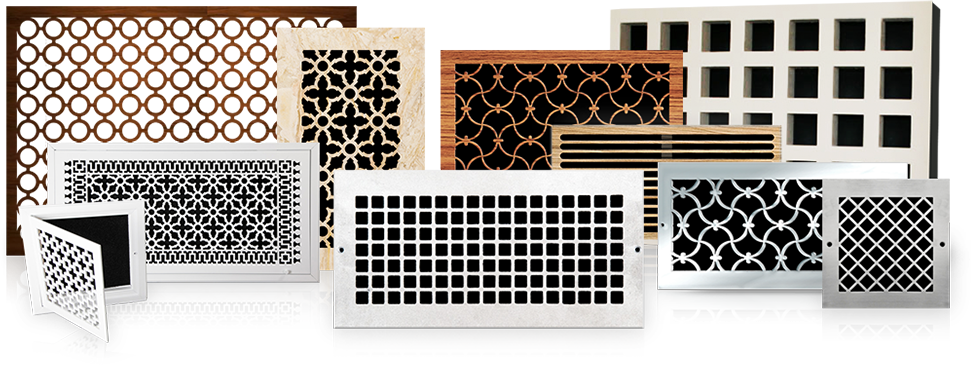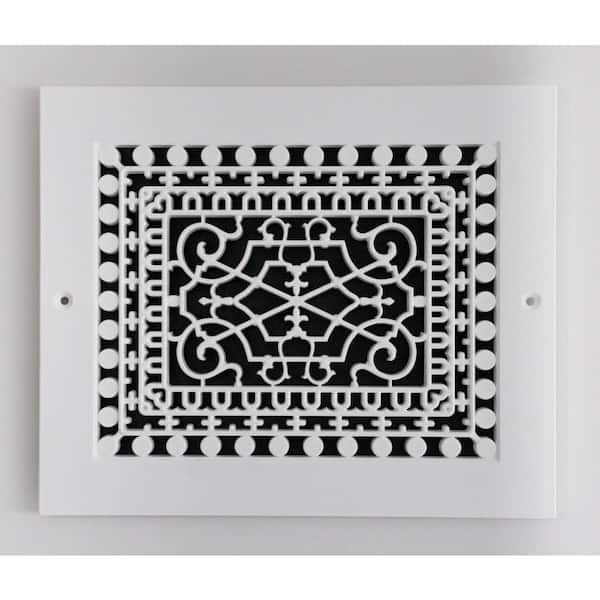Decorative wall register covers are not just functional; they can also add a significant aesthetic value to your home. Having renovated my own space recently, I found that choosing the right wall register cover can completely transform a room. In this comprehensive guide, we will explore everything you need to know about decorative wall register covers—from types and materials to installation tips and recommendations. So, let’s dive in!
Understanding Decorative Wall Register Covers
What is a Wall Register Cover?
A wall register cover is a grille that covers the opening of your HVAC ductwork. It allows air to flow in and out while preventing debris from entering. Decorative wall register covers take this a step further by offering stylish designs that complement your home décor.
Why Choose Decorative Wall Register Covers?
Choosing decorative covers can enhance the overall look of your rooms. Here are a few reasons why you might consider upgrading:
- Aesthetic Appeal: They come in various designs, colors, and materials, allowing you to match them with your interior style.
- Functionality: Many decorative covers are designed to improve airflow efficiency.
- Customization: You can find unique designs that reflect your personality.

Types of Decorative Wall Register Covers
1. Traditional Metal Covers
Metal covers typically feature intricate designs and are durable. They are effective in maintaining airflow and come in various finishes, such as brass, bronze, and chrome.

2. Wooden Register Covers
Wooden covers add warmth to a room. They are often stained or painted to match surrounding furniture.
3. Plastic Register Covers
Plastic covers are lightweight, affordable, and available in a range of colors. They are ideal for a more modern or minimalist aesthetic.

4. Custom Designs
If you have a specific theme in mind, custom decorative register covers can be designed to fit your needs. This option usually comes with a higher price tag but is worth it for a unique look.
Materials Used in Decorative Wall Register Covers

1. Metal
- Aluminum: Lightweight and rust-resistant, making it a popular choice.
- Steel: Offers durability, ideal for high-traffic areas.
- Brass: Adds a vintage touch; however, it requires regular polishing.
2. Wood
Common types of wood used include oak, maple, and birch. Each type brings its unique texture and feel.

3. Plastic
Made from PVC, they are affordable and come in various colors, but may not have the same durability as metal or wood options.
Comparison Table of Different Materials
| Material | Durability | Cost | Aesthetic |
|---|---|---|---|
| Metal | High | $$ | Modern/Vintage |
| Wood | Medium | $$$ | Warm/Rustic |
| Plastic | Low | $ | Modern/Simple |

Choosing the Right Decorative Wall Register Cover
Consider Your Interior Style
While selecting a wall register cover, it’s vital to consider the overall style of your home. A modern loft may look great with sleek metal covers, whereas a rustic cabin would benefit from wooden options.
Measure Before You Buy
Accurate measurements are essential. Measure the length and width of your existing register opening and ensure you choose a cover that fits perfectly.
Airflow Considerations
Choose designs that provide adequate airflow. Some intricate designs may restrict airflow and reduce heating or cooling efficiency.
Budgeting for Your Purchase
Prices can vary significantly based on materials and designs. Metal covers can range from $20 to $100, while custom options might start at $150 and go higher. Consider investing in quality products that will last.
Installation Tips for Decorative Wall Register Covers
What You’ll Need
- Measuring tape
- Screwdriver (flathead or Phillips)
- New wall register cover
Step-by-Step Installation Guide
- Remove the Old Cover: Unscrew the old cover carefully and set it aside.
- Measure for Fit: Ensure the new cover matches the opening.
- Attach the New Cover: Align the new cover with the screw holes and fasten securely.
- Check Airflow: Turn on your HVAC system to ensure airflow is unobstructed.
Maintaining Your Decorative Wall Register Covers
Regular Cleaning
Dust and dirt can accumulate on your wall register covers. Regular cleaning keeps them looking great. Use a soft damp cloth and mild detergent; avoid abrasive cleaners that could scratch the surface.
Inspect for Damage
Check covers for signs of wear and tear, especially if they are in high-traffic areas. Replace any damaged covers promptly to maintain efficiency and aesthetics.
Pros and Cons of Decorative Wall Register Covers
Pros
- Enhances the room’s décor
- Improves airflow control
- Available in various sizes and designs
Cons
- Some designs may restrict airflow
- Initial costs can be higher than standard registers
- Custom designs can take longer to produce
FAQs About Decorative Wall Register Covers
1. Can I paint my decorative wall register cover?
Yes, if the cover is metal or plastic. Use a spray paint designed for metals or plastics for a smooth finish.
2. Are decorative covers suitable for floor registers?
Yes, decorative covers are available for floor registers as well. Ensure you choose a style appropriate for the floor to allow easy foot traffic.
3. How do I know if the decorative register cover will fit my HVAC system?
Measure your current register’s dimensions before purchasing. Most decorative covers come in standard sizes, and custom options are available if needed.
4. Do decorative register covers affect heating and cooling efficiency?
If airflow is restricted, it can affect efficiency. It’s essential to choose designs that allow for optimal airflow.
5. Where can I buy decorative wall register covers?
You can find them at home improvement stores, specialized online retailers, and custom fabrication shops.
Conclusion
In conclusion, decorative wall register covers offer a fantastic way to enhance your home’s aesthetic while maintaining functionality. Whether you prefer metal, wood, or custom designs, there’s a suitable option for every home style. As someone who has recently upgraded my own space with beautiful register covers, I can attest to the difference they make. Happy decorating!